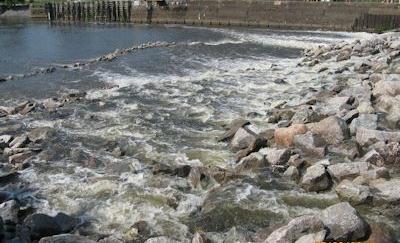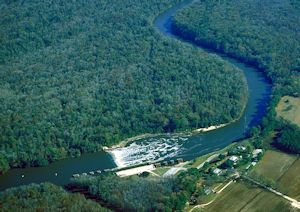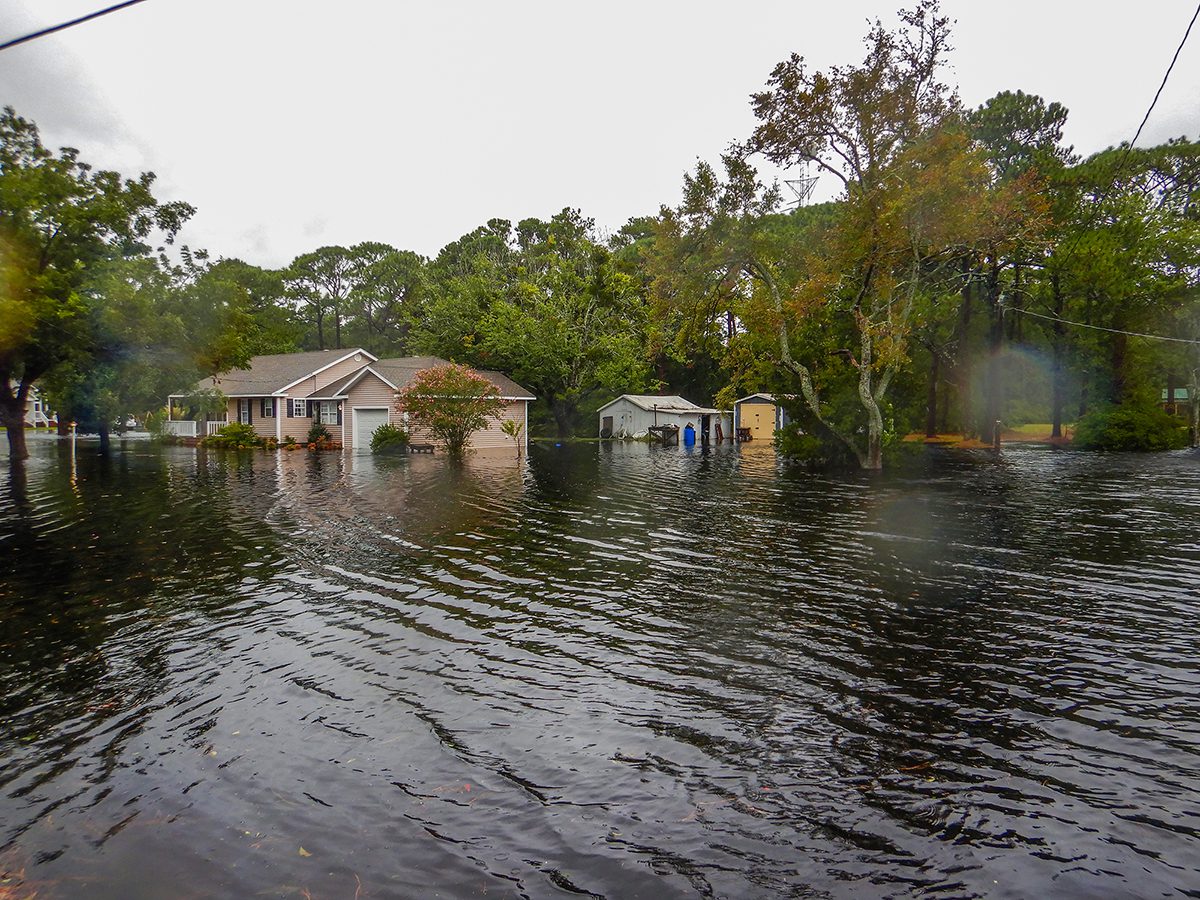WILMINGTON — It’s been nearly 100 years since Lock and Dam No. 1 was built across the Cape Fear River, cutting short a source crucial to fish that spawn in freshwater.
The first of three dams built in the river during the early 1900s to provide for commercial navigation between Fayetteville and Wilmington, Lock and Dam No. 1 will soon be the latest project putting man-made fish passages to the test.
Sponsor Spotlight
 The fish passage is designed to resemble natural rapids. Photo: Army Corps of Engineers. |
The Army Corps of Engineers is in the final stages of building a rock arch rapids across the 275-foot dam in Bladen County.
Constructed of rock arranged in an arch pattern, the structure is designed to mimic a natural rapids, providing anadromous fish – those that migrate between salt and freshwater – a chance to swim beyond the concrete barrier 39 miles upstream from Wilmington. The arch rapids should be finished by early November.
The finished product will mark the end of a two-year, two-part, $13 million project for the Corps of Engineers. Before construction on the rapids began, the Corps had to fill in a 45-foot deep hole below the dam to stabilize the 97-year-old structure.
Lock & Dam 1 is one of literally thousands of dams peppered along North Carolina’s rivers. There are ongoing efforts to remove the dams, many aging barriers built to support things like mills that quit operating years ago, to restore natural ecosystems.
Sponsor Spotlight
“The obvious question is, ‘Why don’t we take them all out,’” said Frank Yelverton, a biologist with the Corps’ Environmental Resources Section in Wilmington.
Removing the dam would require the restructuring of water supply intakes, a project that would cost exponentially more than repairing the dam and building the arch rapids.
The project has the support of American Rivers, a national, nonprofit organization that works to protect and restore rivers in the U.S.
The Corps and U.S. Fish and Wildlife, “put their heads together and they did a lot of analysis,” said Lynnette Batt, associate director of the non-profit group’s River Restoration Program southeast region based in Raleigh.
 Local and Dam No. 1 on the Cape Fear River before the installation of the fish passage. Photo: Army Corps of Engineers. |
“Fish passage is a tricky subject,” she said. “American Rivers doesn’t really work on fish passage projects anymore. But we understand that, while dam removal is the best thing to do, it’s not always feasible.”
The arch rapids on Lock & Dam No. 1 are the largest of their kind in the state.
Researchers from N.C. State University will tag and monitor fish that travel through the rapids, keeping score of which species of fish benefit from the passage.
Among the anadromous fish they hope to see are Atlantic and short-nose sturgeon, fish listed on the federal and state endangered species lists.
“We think the rapids will pass close to 100 percent of the fish,” Yelverton said.
While the verdict is still out on just how effective manmade fish rapids are in restoring a river’s natural ecological makeup and the number of fish that use them, research indicates rapids are better than fish ladders because rapids allow for a greater diversity and abundance of fish to pass.
“It’s a pretty cool effort so I’m really hoping it works out and that they’re getting the passage efficiencies that they hope for,” Batt said.
The project is a step in the right direction as far as American Rivers is concerned. There are some 5,600 dams in North Carolina, hundreds of which are nearly or more than 100 years old.
“A lot of people think of dams like the Hoover or Jordan Lake or Falls Lake, but those larger dams represent just a small fraction of dams out there,” Batt said. “The national statistic is that there’s a dam every six to eight navigable river miles. It’s hard to believe. Then, you start down these rivers.”
Batt recently paddled along a seven-mile section of the Haw River and found four dams.
 Lynnette Batt |
American Rivers last year celebrated the 1,000th dam removal in the U.S. That number is on the rise as more dams reach the end of their intended lifespan and are deemed unsafe.
Many communities are making the decision to remove them, Batt said.
“In the coastal region, we’re definitely seeing it more as well,” she said. “In North Carolina, there have been about two dozen dam removals that have happened in the last 12 or so years. A lot of people think of them as permanent structures, but absolutely every structure in a river has a lifespan and it’s just a matter of time before they fail.”
In addition to dam removal, North Carolina has also had a lot of “deserved focus” on restoring river habitats for migratory fish, she said.
The habitat in water held behind a dam changes drastically because, as the water sits still, it becomes more like a pond and no longer supports the type of species that naturally live in a river.
Overall, the number and species of river life plummets in an impounded section, which can extend for miles. For example, the impounded area behind a dam in the Uwharrie River, which is in the Yadkin-Pee Dee River basin, extends 2.5miles, Batt said.
“Another benefit is allowing fish and muscles and other species in the river to physically move,” she said.
That allows populations of species to breed with different populations, which creates genetic diversity.
Dams also affect a river’s water quality, which affects fish and organisms living in the water. Standing water doesn’t contain the oxygen levels of free flowing water, which also affects the habitat. Also, the temperature gradient on the top level of water is warmer in water that stands still.







